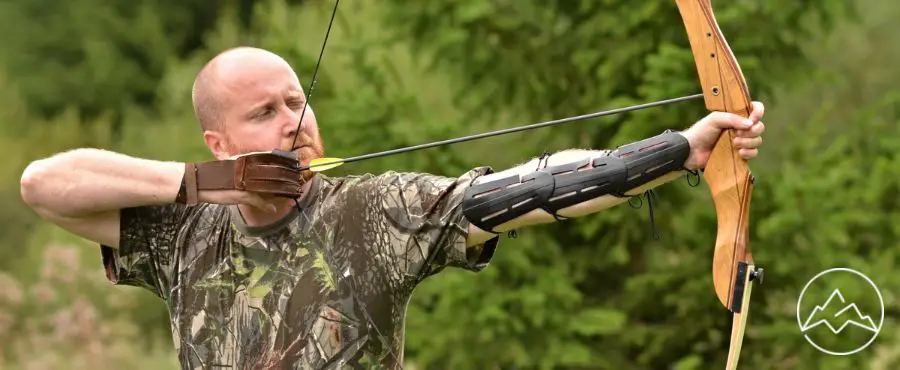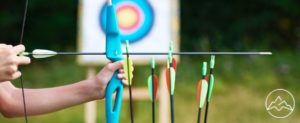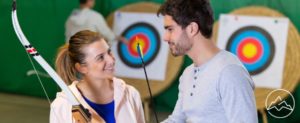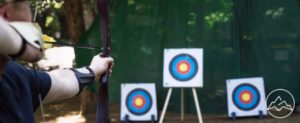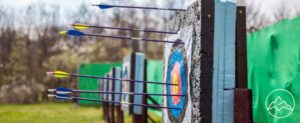Choosing the right bow and arrows in archery requires a thorough understanding of draw length and arrow length. Draw length refers to the distance from the bow handle to the apex of the string at full draw, and it plays a crucial role in selecting the appropriate bow and making necessary adjustments. Compound bows have fixed draw lengths, while recurve bows and longbows do not. Accuracy and form in shooting can be significantly impacted by an improper draw length, emphasizing the importance of obtaining an accurate measurement. On the other hand, arrow length is determined by adding approximately 2 inches to your draw length and is measured from the nock to the end of the shaft. Additionally, the stiffness of the arrow, known as the arrow spine, is a critical factor in selecting arrows and can be determined using arrow spine charts. It is essential to differentiate between arrow length and arrow size, with length referring to shaft length and size indicating diameter. Therefore, understanding these measurements is vital when purchasing archery equipment to ensure optimal performance and shooting experience.
Key Takeaways
- Draw length and arrow length are two different measurements in archery.
- Draw length is the distance from the bow handle to the apex of the string at full draw.
- Arrow length refers to the length of the arrow shaft, measured from the nock to the end of the shaft.
- Arrow length is determined by adding about 2 inches to your draw length.
Draw Length Explained
Draw length is an essential measurement in archery as it determines the distance from the bow handle to the apex of the string at full draw, and understanding draw length is crucial for choosing the right bow and adjusting it to individual needs. Measuring draw length accurately is important to ensure optimal shooting performance. An incorrect draw length can have a significant impact on shooting accuracy and form. If the draw length is too long, it can cause overextension and affect the archer’s anchor point, resulting in inconsistent shots. On the other hand, if the draw length is too short, it can lead to a cramped shooting position and limited power. Therefore, it is recommended to visit a local archery shop to determine the correct draw length and make necessary adjustments for a comfortable and accurate shooting experience.
Arrow Length Explained
Arrow length refers to the measurement of the shaft from the nock to the end, and it is typically determined by adding approximately 2 inches to the draw length. This additional length allows for proper alignment of the arrow with the bow and provides clearance for the arrow rest. However, it is important to note that arrow length can vary depending on individual preferences and requirements.
When selecting arrows, arrow spine is a crucial factor to consider. Arrow spine refers to the stiffness of the arrow shaft and is determined by the draw weight of the bow and the draw length of the archer. Arrow spine charts are available to help archers choose the correct spine for their specific draw length and weight.
Additionally, bare shaft tuning can be used to fine-tune arrows for straight flight. This technique involves shooting arrows without fletching to assess their flight characteristics and make adjustments as needed. By understanding arrow length and spine selection, archers can optimize their equipment for improved accuracy and performance.
Importance of Proper Measurements
Accurate measurements in archery are crucial for proper equipment selection and optimal performance, ensuring that the archer’s abilities and equipment are in sync. The importance of accurate equipment fitting cannot be overstated, as it directly impacts an archer’s shooting performance. Improper measurements, such as an incorrect draw length or arrow length, can lead to various issues. For example, a draw length that is too long or too short can result in a lack of control and accuracy, affecting an archer’s form and shot execution. Similarly, using arrows that are either too long or too short can negatively impact arrow flight and overall shooting consistency. Therefore, it is essential to take precise measurements and consult with professionals to ensure the correct fit of both the bow and arrows, allowing for improved shooting performance and greater accuracy on the archery range or in competition.
Frequently Asked Questions
How can I adjust the draw length of a compound bow?
Adjusting the draw length on a compound bow is crucial for achieving proper shooting form and maximizing accuracy. To adjust the draw length, you will typically need to change the cam or module settings on the bow. This is usually done by a qualified archery technician or a knowledgeable individual. It is important to ensure that the adjusted draw length matches your physical capabilities and shooting style to optimize performance and prevent injury. The proper draw length is essential in archery as it directly affects shooting accuracy, form, and overall shooting experience.
What are the potential consequences of using arrows that are too stiff?
Using arrows that are too stiff can have several potential consequences. Firstly, it can result in decreased accuracy, as the arrow’s stiffness may prevent it from flexing properly upon release. This can cause the arrow to fly off course and miss the target. Additionally, using arrows that are too stiff can lead to increased stress on the bow and arrow components, potentially causing damage or breakage. To choose the right spine for arrows, it is important to consult arrow spine charts that consider draw length and weight to ensure optimal performance and safety.
Can I use the same arrows for different draw lengths?
Using arrows with different draw lengths can have negative effects on accuracy and form. Arrow spine is an important factor to consider when selecting arrows for different draw lengths. Adjusting arrow length according to draw length is crucial for optimal performance. Using incorrect arrow length can lead to issues such as decreased accuracy and potential breakage. Factors affecting arrow accuracy and form include arrow spine, arrow length, and proper tuning. It is important to consider these factors when choosing arrows for different draw lengths.
Is there a specific formula for determining arrow length based on draw length?
There is no specific formula for determining arrow length based on draw length in archery. However, there are guidelines that can be followed to achieve optimal draw length and tailor arrows to individual draw length for improved performance. Proper technique, such as using proper shooting form and measuring the distance between fingertips, can help determine draw length. Arrow length is typically draw length plus 2 inches, but leaving extra length for tuning purposes is recommended. Customizing arrow length to individual draw length can enhance accuracy and shooting form.
Are there any other factors besides draw length that affect accuracy and form in archery?
Improving aim and stability in archery requires attention to factors beyond draw length. Two crucial elements are the proper grip and stance. The grip should be firm yet relaxed, allowing for a smooth release and minimizing torque on the bow. Meanwhile, a stable stance provides a solid foundation, enhancing balance and reducing unwanted movement. These aspects, combined with draw length, contribute to accuracy and form in archery by creating a consistent and controlled shooting platform.
Conclusion
In conclusion, understanding draw length and arrow length is essential in choosing the right bow and arrows for archery. Draw length refers to the distance from the bow handle to the apex of the string at full draw, while arrow length is the measurement from the nock to the end of the shaft. Proper measurements are crucial for accuracy and form in shooting. Remember the adage, “Measure twice, cut once,” to emphasize the importance of getting accurate measurements before making any purchasing decisions.

